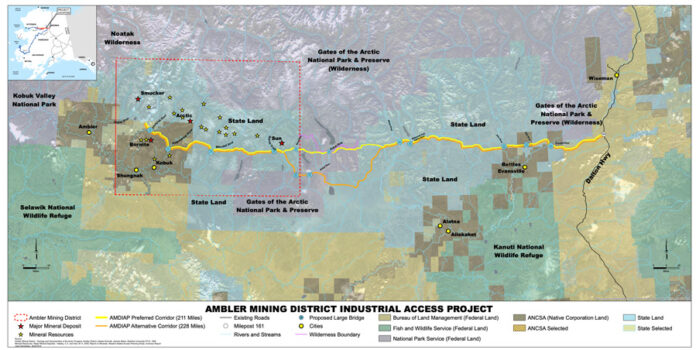Welcome to the latest installment of the Wednesday Wake-Up Call, a roundup of the most pressing conservation issues important to anglers. Working with our friends at Trout Unlimited, Backcountry Hunters & Anglers, the Theodore Roosevelt Conservation Partnership, The Everglades Foundation, Captains for Clean Water, VoteWater.org, Bonefish & Tarpon Trust, and Conservation Hawks (among others), we’ll make sure you’ve got the information you need to understand the issues and form solid opinions.
1. Everything You Need to Know About the Ambler Mining Road, Which Threatens Alaska’s Brooks Range Wilderness
We live in a sound-bite culture, so here is a rare opportunity to get a concise, in-depth analysis of an important issue. In this video, Cameron Sabin of the National Park Diaries YouTube channel explains what the proposed project is, its recent history of regulatory approvals and denials, and why it is currently in the news. Then he walks you through both the arguments for and against the projects.
The Ambler Mining Road is a proposed industrial access corridor in the Brooks Range of Alaska. The purpose of the road is to access a valuable mineral belt, known as the Ambler Mining District, in order to mine metals such as copper, zinc, cobalt, and others. The road would cut 211 miles across the Alaskan tundra, including Gates of the Arctic National Park and Preserve, and is expected to have significant impacts on fish, wildlife, subsistence and Native inhabitants, and recreation users. The anticipated mines would also have associated impacts.
Map via BLM
Please take 20 minutes to watch the video to become informed on this issue, and then make your voice heard before December 22.
Click here to submit comments on BLM.gov
(Hit the “Participate Now” button)
Click here for the automated opposition letter
from the National Parks Conservation Association
2. Make Your Voice Heard on Striped-Bass Management

The Atlantic States Marine Fisheries Commission has released the final version of Draft Addendum II for Striped Bass for public comment. The goal of this document is to reduce fishing mortality by adjusting recreational measures and commercial quotas in the ocean and Chesapeake Bay regions.
ASMFC is now holding virtual and in-person hearings from New England down through Virginia to collect public comment on this document. The deadline for public input is December 22nd, 2023, so be sure to look into the options within Draft Addendum II and share your perspectives before the clock runs out. The American Saltwater Guides Association has provided a summary of their positions, a template to guide your public comments, podcast resources and the full schedule of in-person and virtual meetings.
Click here to learn more at saltwaterguidesassociation.com
3. A Bonefish Revival in the Florida Keys?

For many years the narrative about the bonefish fishery in the Florida Keys was eligaic: The Good Ol’ Days were over, never to return. But a funny thing has happened, according to T. Edward Nickens, writing in Field & Stream. After decades of decline due to development, poor water quality, seagrass die-offs, and the like, biologists have begun to understand more and more about this enigmatic species, hope or a population rebound has grown.
As more details emerge about the bonefish life cycle, and the specific areas most critical to their spawning success, scientists can work on conservation efforts for the species. Moving forward will require a closer relationship between recreational anglers and fisheries researchers. Bonefish guides were critical to the discovery of the spawning sites in the Florida Keys and beyond. And elsewhere, anglers for permit, striped bass, false albacore, and other species are pitching in to aid researchers in collecting data on their favored targets. Scientists like Boucek and Castillo underscore a growing relationship between the angling and scientific communities—a recent phenomenon that should benefit fisheries conservation.
Click here to read more on fieldandstream.com
Credit: Source link






























